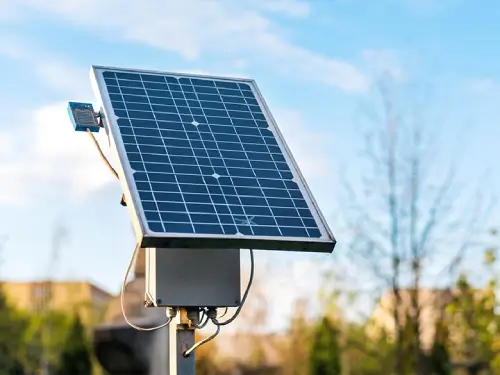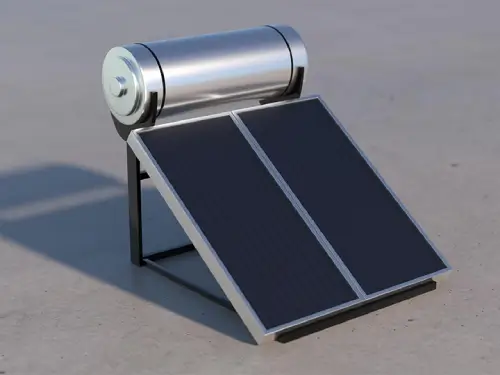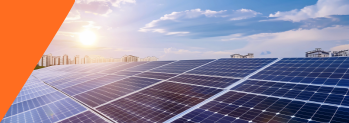Across India, rising energy bills and the growing need for sustainable alternatives have pushed both homeowners and businesses to look for efficient ways to use solar power. Whether it’s heating water for everyday household use or meeting the hot water requirements of hotels, hospitals, and industrial facilities, solar energy is proving to be a smart, long-term investment.
Among the many technologies available, Flat Plate Solar Collectors have emerged as one of the most reliable and widely adopted systems. Designed to capture and convert sunlight into usable heat, these collectors are perfectly suited for India’s hot tropical climate. They offer a practical solution to reduce reliance on fossil fuels. Further, we will discuss it in detail.
What is a Flat Plate Collector?
Flat Plate Solar Collectors are one of the most common and efficient solar thermal systems used for heating applications. They work by capturing sunlight and converting it into heat energy, which can then be used to warm water or air which making them Ideal for India’s sunny climate. These collectors deliver consistent performance throughout the year, making them suitable for both domestic and commercial purposes. They are especially popular for offering a reliable, low-maintenance, and eco-friendly way to reduce energy costs and carbon emissions. It consists of three primary components:
In systems designed for liquids, water flows through tubes connected to the absorber plate. As the fluid circulates, it absorbs heat and is then directed to a storage tank or directly to its end-use, such as a hot water supply in residential or commercial buildings.
How do Flat Plate Collectors Work?
Flat Plate Solar Collectors operate on a simple yet effective principle to capture sunlight and convert it into thermal energy. Their design allows for efficient heat transfer, making them ideal for India’s climate, where solar radiation is abundant. Here’s how the process works:
1. Solar Radiation:
Sunlight first passes through the transparent glass cover and reaches the absorber plate beneath. This setup allows maximum solar energy to enter while minimizing reflection losses.
2. Heat Absorption:
The absorber plate, usually coated with a special dark material, efficiently captures solar radiation and converts it into heat energy. The dark surface ensures better absorption and minimal heat reflection.
3. Heat Transfer:
In liquid-based systems, this heat is transferred to water (or another fluid) flowing through tubes attached to the absorber plate. As the fluid circulates, it warms up and carries the heat away for use.
4. Insulation:
An insulating layer beneath the absorber prevents heat from escaping, maintaining higher temperatures within the collector and improving overall system efficiency.
5. Usage:
The heated liquid is then stored in an insulated tank or supplied directly for applications like residential water heating, hotel hot water systems, or industrial processes.
While air-based systems also exist, liquid-based flat plate collectors are more popular in India due to their higher efficiency and suitability for domestic and commercial use.
Types of Flat Plate Solar Collectors
They are categorized based on the type of working fluid they use to transfer heat. The two primary types are:
1. Liquid collectors:
These are the most widely used solar thermal collectors, especially for water heating applications in homes, hotels, and industries. In these systems, a liquid (typically water) flows through tubes bonded to the absorber plate. As the liquid passes through, it absorbs the solar heat and transfers it to a storage tank or directly to the point of use. They are valued for their high efficiency, particularly in regions with abundant sunlight.
2. Air collectors:
In this type, air is used instead of liquid as the heat transfer medium. The absorber plate heats the air as it flows through the collector, which is then circulated to warm indoor spaces or for drying processes in industrial and agricultural applications. While less common than liquid systems, air collectors are useful in areas where water is scarce or in off-grid heating applications that require minimal maintenance.


Comparison with Other Solar Collectors
They are often compared to other types of solar collectors, such as evacuated tube collectors. While both have their benefits, ETCs may offer higher thermal efficiency, particularly during colder months or early mornings; they remain a cost-effective and durable choice for typical Indian residential and commercial applications.
Absorber Plate and Its Role
The absorber plate is a critical component of the system. It is the part that absorbs sunlight and transfers the heat to the working fluid (either liquid or air). The slab is typically coated with a material that enhances its ability to absorb solar radiation, ensuring that the system operates at peak efficiency. Its role is to maximize heat absorption while minimizing heat loss, making it essential for the overall performance of the system.
Advantages of Flat Plate Solar Collectors for Efficient Use
Flat Plate Solar Collectors offer several advantages, particularly for users in India, where a good amount of sunlight makes solar heating highly efficient and cost-effective. Their reliability, low maintenance, and ability to perform well in tropical conditions make them a practical choice for both residential and commercial applications. The following are some great advantages of Flat Plate Solar Collectors:
Applications of Flat Plate Solar Collectors in India
Flat Plate Solar Collectors are primarily used for solar water heating across different sectors in India. Their ability to efficiently harness sunlight and provide consistent hot water makes them ideal for both small-scale and large-scale applications. Here’s how they are commonly used:
Regions like Rajasthan, Gujarat, and other sunny states in India are particularly well-suited for installing them due to their high levels of solar radiation. Alpex, a leader in solar energy solutions, has successfully installed these systems across India, helping businesses and households reduce their energy bills and environmental footprint.
The Growing Role of Flat Plate Solar Collectors in the Indian Market
India is a rapidly growing market for solar energy, driven by the need for clean and affordable energy solutions. They are well-positioned to meet this demand due to their cost-effectiveness and reliable performance.
Choosing a leading solar panel manufacturer ensures that users get a high-quality product that will provide reliable service for years to come. The potential for growth in India’s solar energy sector is enormous, and it will continue to play a key role in the country’s transition to renewable energy.
Conclusion
They present a dependable and cost-effective solution for using solar energy, particularly in regions like India. Their straightforward installation, durability, and high efficiency make them an ideal choice for reducing energy consumption and promoting sustainable practices. Opting for a trusted provider like Alpex, users can experience system efficiency, long-term reliability, and maximum return on investment, contributing meaningfully to India’s transition toward a cleaner, greener energy future.




